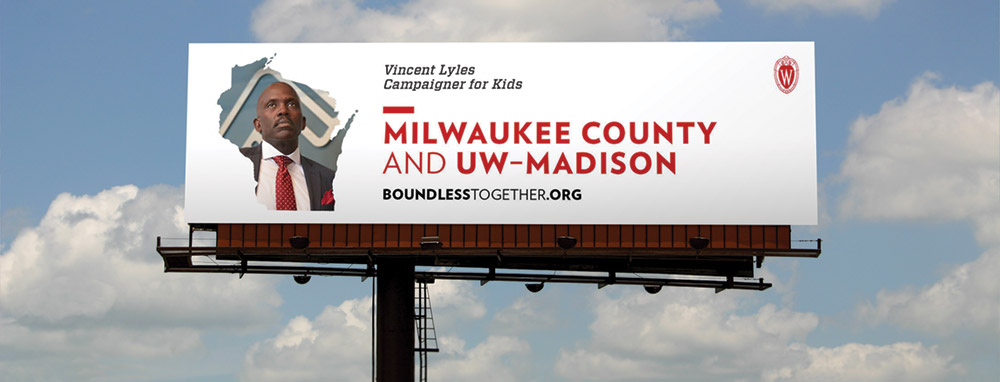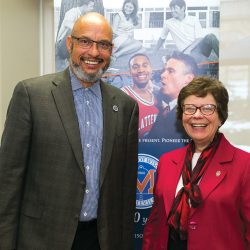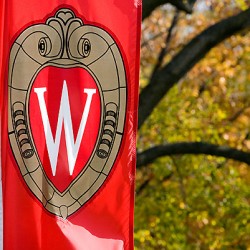Time for a Change

Billboards placed around the state that tout the contributions of UW alumni are part of an unprecedented effort ahead of the next state budget. Vincent Lyles ’84, JD’87 oversees the Boys & Girls Clubs of Greater Milwaukee’s more than 800 employees and nearly 600 volunteers. Background Image ISTOCK/Photo Illustration
Five of the last six state budgets cut funding to the University of Wisconsin System, so Chancellor Rebecca Blank has a simple message for alumni and legislators this time around: it’s time to reinvest in the UW.
At a campus forum this fall, Blank told faculty, staff, and students that the cuts threaten the quality of the state’s flagship university. As some top faculty and staff depart, its reputation suffers.
Wisconsin is one of just nine states that have reduced support for higher education over the last two years. Thirty-nine states increased funds to colleges and universities. And, Blank noted, the UW’s peers are investing in new programs and research centers.
“My biggest challenge as chancellor is to first make sure this university can find a way to stabilize its finances so we aren’t constantly facing budget crises every two years of the sort we’ve seen this biennium,” Blank said. “But, second, I need to do better than that. I can’t just stop the cuts; we need to get ahead. I have to find the funds that help us reinvest in the university.”
Blank supports a board of regents request for $42.5 million in new funding to train students in Wisconsin’s most high-demand fields, such as computer science, business, nursing, and engineering. The proposal also emphasizes career initiatives, funding for building maintenance and renovation, and operational flexibilities.
That investment would be welcome news to professors who have seen some colleagues take positions at other colleges and universities. In a recent column in the Milwaukee Journal Sentinel, geography professor Jack Williams explained why he explored a job at another university — which offered better pay and more time to pursue research — and why he decided to stay.
“UW–Madison and the state universities are one of the great achievements of our country,” he wrote. “In this accelerating world, our mission of world-class research and education is ever more important. I’ve stayed to serve this state, and I remain hopeful that the state will return to supporting its great university.”
UW–Madison receives funding through five main channels: federal revenue, state revenue, gifts from donors and nonfederal grants, student tuition and fees, and revenue from auxiliary operations, such as University Housing and the Wisconsin Union. The state share, which used to be the largest source of UW funding, is now the smallest of those five, at just under 15 percent. Blank noted that state funds remain vital to the UW’s teaching, research, and outreach missions because they leverage funds from the federal government and other sources.
Wisconsin Governor Scott Walker is expected to deliver his budget proposal to the legislature early next year. He has indicated that there could be new funding for the UW System tied to certain performance measures, such as graduation rates and job placement.
During the last year, Blank has traveled across the state, meeting with legislators and business leaders and sharing the message that the UW is an economic engine for Wisconsin. A new ad campaign using private funds employs a variety of media, including billboards, to reinforce that theme by highlighting the contributions of UW–Madison alumni in each of the state’s 72 counties.
From a social worker in Grant County to a cranberry grower in Wood County to a language teacher in Menominee County, the stories are designed to demonstrate the influence of UW alumni on their Wisconsin communities.
“We won’t just be making our case to legislators,” Blank says. “We’ll go directly to the people of the state in new and creative ways. We can’t take for granted that everyone is aware of all of the ways in which this university and its alums are involved in communities across the state.”
Published in the Winter 2016 issue



Comments
No comments posted yet.